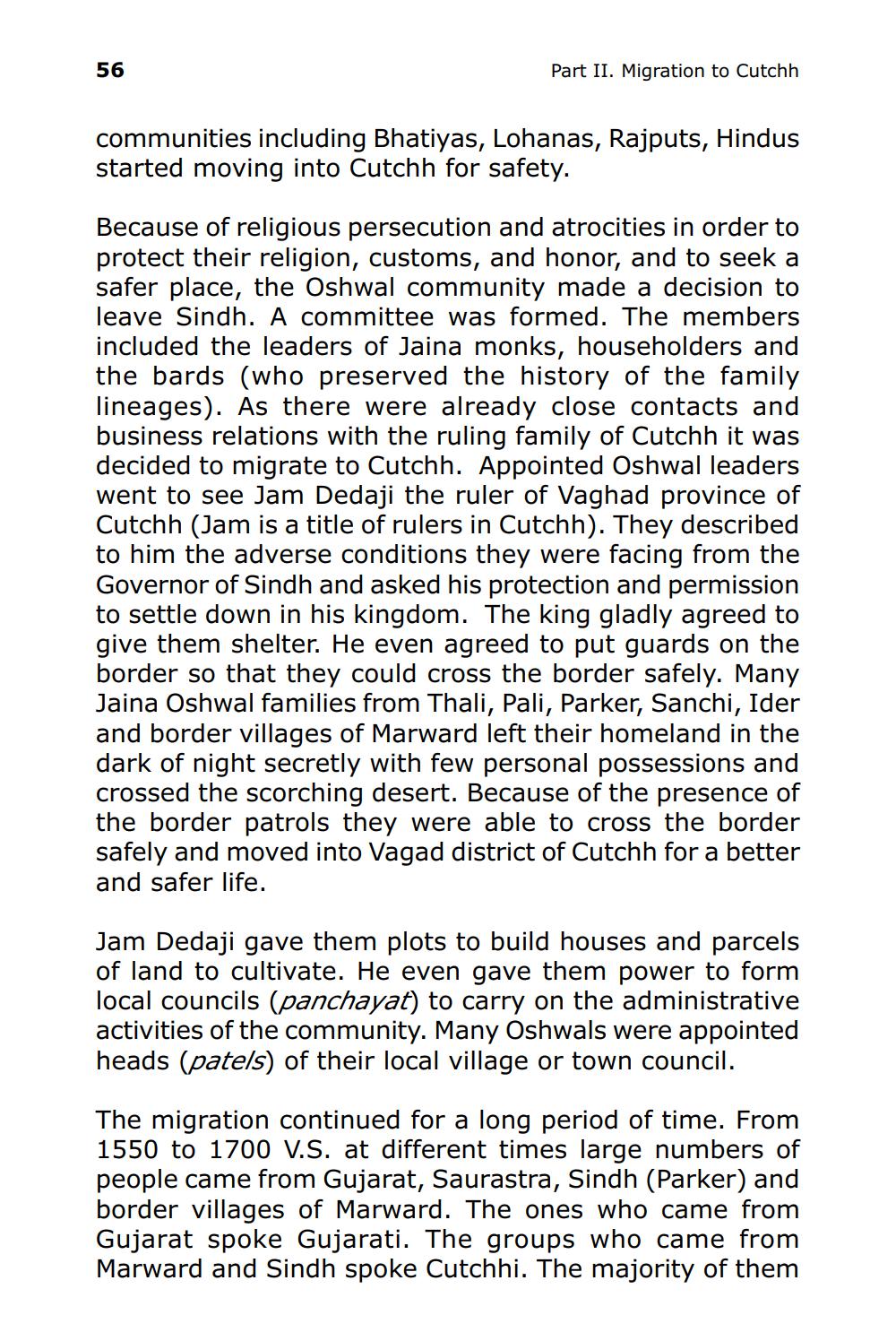________________
56
Part II. Migration to Cutchh
communities including Bhatiyas, Lohanas, Rajputs, Hindus started moving into Cutchh for safety.
Because of religious persecution and atrocities in order to protect their religion, customs, and honor, and to seek a safer place, the Oshwal community made a decision to leave Sindh. A committee was formed. The members included the leaders of Jaina monks, householders and the bards (who preserved the history of the family lineages). As there were already close contacts and business relations with the ruling family of Cutchh it was decided to migrate to Cutchh. Appointed Oshwal leaders went to see Jam Dedaji the ruler of Vaghad province of Cutchh (Jam is a title of rulers in Cutchh). They described to him the adverse conditions they were facing from the Governor of Sindh and asked his protection and permission to settle down in his kingdom. The king gladly agreed to give them shelter. He even agreed to put guards on the border so that they could cross the border safely. Many Jaina Oshwal families from Thali, Pali, Parker, Sanchi, Ider and border villages of Marward left their homeland in the dark of night secretly with few personal possessions and crossed the scorching desert. Because of the presence of the border patrols they were able to cross the border safely and moved into Vagad district of Cutchh for a better and safer life.
Jam Dedaji gave them plots to build houses and parcels of land to cultivate. He even gave them power to form local councils (panchayat) to carry on the administrative activities of the community. Many Oshwals were appointed heads (patels) of their local village or town council.
The migration continued for a long period of time. From 1550 to 1700 V.S. at different times large numbers of people came from Gujarat, Saurastra, Sindh (Parker) and border villages of Marward. The ones who came from Gujarat spoke Gujarati. The groups who came from Marward and Sindh spoke Cutchhi. The majority of them




